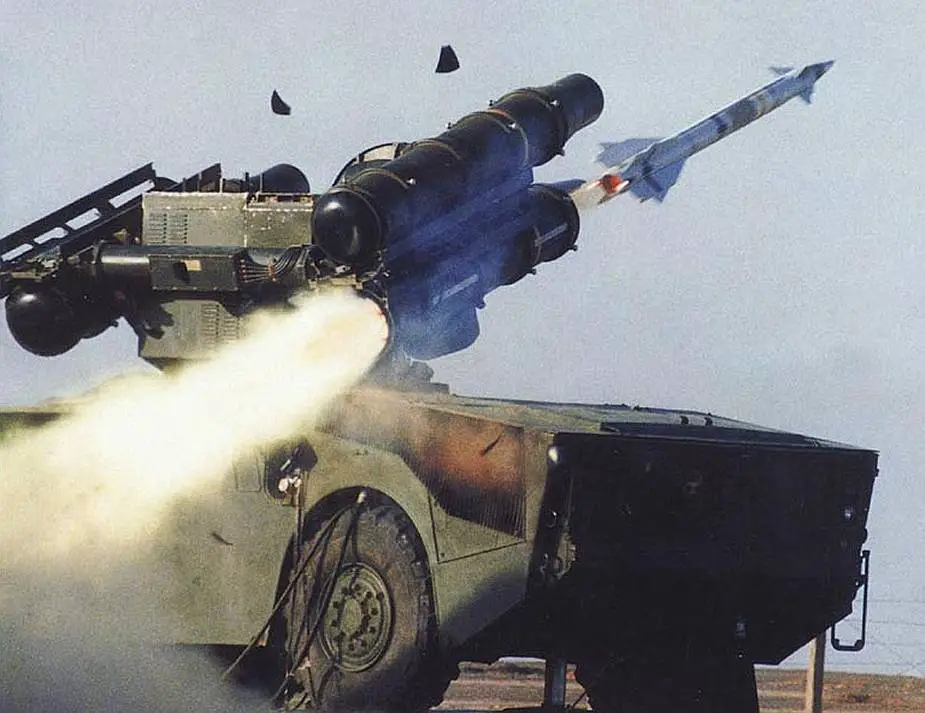Breaking news
Chinese company Vanguard to build large missile plant in Bangladesh.
A decade after China delivered FM-90 air defense missile systems to Bangladesh, the country is set to get a maintenance and overhaul facility that could also serve as a production line for the same missile and its upgraded variants, reported The Tribune quoted by Sakshi Tiwari in The Eurasian Times. A Chinese Company, Vanguard, has reportedly been chosen as a partner for the FM-90 missile maintenance center to be established in Bangladesh. At the moment, Bangladesh’s Air Force, Navy, and Army are all armed with FM-90 air defense systems.
Follow Army Recognition on Google News at this link

Chinese-made FM-90 air defense missile launcher of the Bangladesh Army (Picture source: Wikimedia Commons)
The facility is being set up even as the missile ran into a controversy in Bangladesh last year, Sakshi Tiwari reports in The Eurasian Times. Due to some technical concerns, the FM-90 had come under the scanner, alongside other arms exports from China. Questions were then raised about the longevity of Chinese arms: according to those in the know, the system component CV-102 of the FM-90 was found to be malfunctioning due to a rapid power surge, causing damage to the klystron sparking and filament.
The FM-90 system, mounted on a 6x6 chassis, is an enhanced version of the Hong Qi, a missile developed by China National Precision Machinery Import and Export (CNPMIEC) in 1998. Mobile all-weather, short-range, anti-aircraft missile system HQ-7 (HongQi-7, Huntsi-7, Red Banner-7, export designation - FM-80) was designed to destroy targets flying at low and extremely low altitudes. Creation of the HongQi-7 SAM system began in 1979. The system, which is a localized copy of the French Crotale SAM system, was developed at the Second Aerospace Academy of China (now the Chinese Academy of Defence Technology/CADT). CADT is part of China Aerospace Science & Industry Corporation. Institute 23 has developed the control system and radar facilities of the complex, Institute 206 - ground equipment.
The export version of the HQ-7 SAM system under the designation FM-80 was first demonstrated at the Dubai Air Show in 1989. Later in 1998, China National Precision Machinery Import and Export Corporation (CNPMIEC) introduced an improved version of the complex designated FM-90 (HQ-7B).

Firing of a HongQi-7 air defense missile. The system, which is a Chinese copy of the French Crotale SAM system, was developed at the Second Aerospace Academy of China (now the Chinese Academy of Defence Technology/CADT) (Picture source: CNPMIEC)
In comparison with the prototype, the serial FM-90 system uses a new dual-band guidance radar instead of monopulse Type-345. The information processing unit is based on super large integrated circuits (developed by Institute 706). The transition to a fully digital information processing instead of analogue one allowed to significantly increase the noise immunity of the complex in conditions of active and passive interference. A thermal imaging camera was integrated into the optoelectronic tracking system to provide for firing at night, and the complex was equipped with a radio communication system, which provides information exchange between the combat control point and launchers, similar to the Crotale "series 4000" SAM system. The rocket engine uses an improved solid propellant charge, which significantly increased the range of flight, upgraded the fuse and control system equipment.
With a maximum range of 25 km, the FM-90 can simultaneously attack three targets using different guidance modes. According to the developers, the probability of hitting a typical target with a single missile is from 80 to 90%, while the probability of hitting a two-missile salvo is 96%. The system is able to intercept targets at extremely low altitudes, as well as anti-radar missiles and air-to-surface cruise missiles at a distance of up to 17 km.
In 2011, FM-90 was delivered to Bangladesh. The system features a radar with a range of 25 kilometers and can be fired against ultra-low-altitude cruise missiles, air-to-surface missiles, and anti-radiation missiles at a range of more than 17 kilometers. For greater capabilities against active/passive jamming, the ground-based air defense weapon system includes a VLSI-based computer, two-waveband tracking radar, an infrared camera, and digital electronic technologies.
Although seen as an all-weather ally of India, Bangladesh maintains close trade and military ties with China. The two countries had signed a Defense Cooperation Pact in 2002, which also covers weapons production. Warships, naval artillery, anti-ship missiles, and surface-to-air missile systems are among the Chinese military investments and supplies to Bangladesh. Bangladesh is China’s second-largest arms buyer after Pakistan. According to the Stockholm International Peace Research Institute (SIPRI), Bangladesh bought almost 17% of all Chinese military exports between 2016 and 2020.
Bangladesh depends on China for its military need to a large extent. In 2008, an Indian defense expert Gurmeet Kanwal had stated that Bangladesh’s missile arsenal, which is being built with Chinese assistance, is part of Beijing’s goal to encircle India. In 2016, Bangladesh joined the Chinese Belt and Road Initiative. However, it did not allow Chinese investment in deep-sea ports which could prove suitable for a future Chinese Navy presence.
India had earlier given a $500 million line of credit to Bangladesh for defense imports, and the Bangladesh Army received 18 120mm mortars in December 2020 as part of army-to-army cooperation. A missile export could also be expected in the future based on India’s export list, Sakshi Tiwari concludes.


























